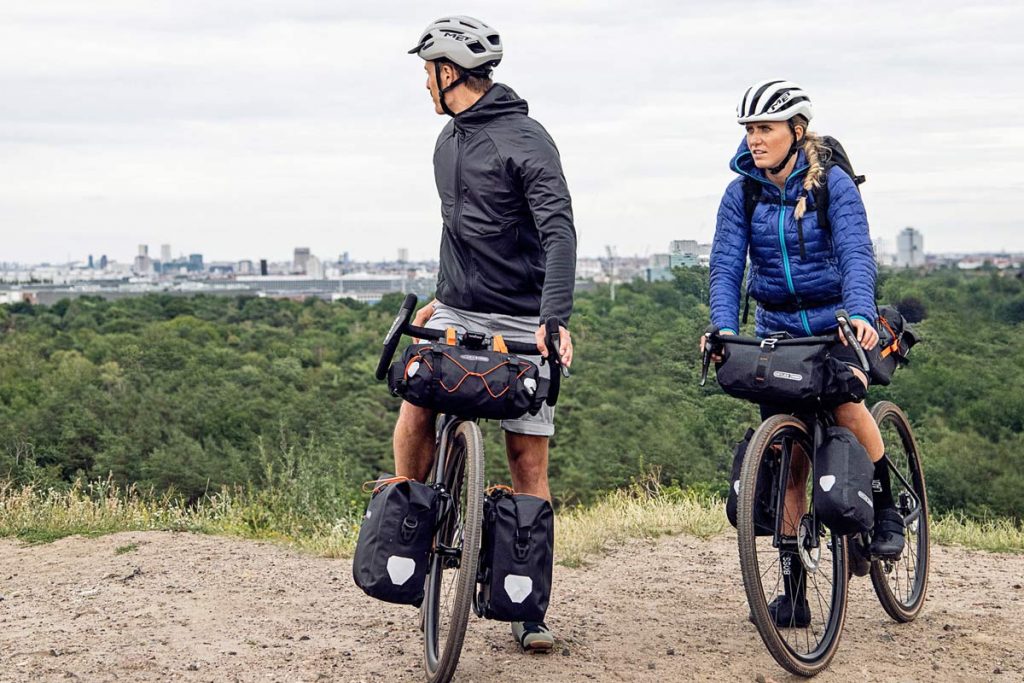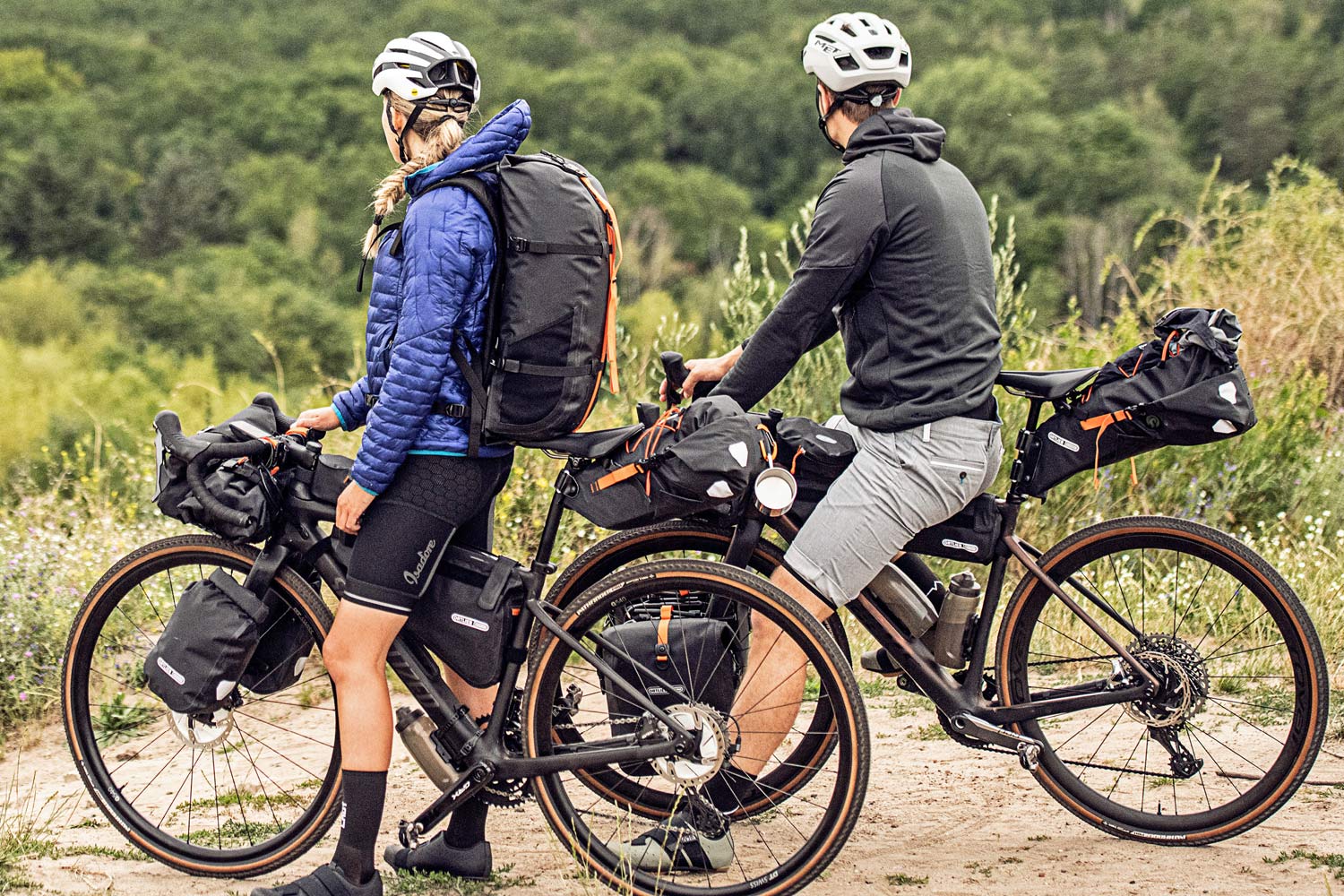Gravel bikes are perfect for bikepacking, from small daily adventures to real journeys hundreds if not thousands of kilometers long. But for pedaling to be really fun, the bike must also be perfectly prepared: from choosing the bags to how to fill them, up to what to bring and what to leave at home, here is our guide to bikepacking.
The guide to Bikepacking with gravel bikes
Meanwhile, to begin with, what exactly is meant by bikepacking? Simply put, it is the meeting point between off-road cycling and backpacking. That is biking + backpacking. That is, all the freedom of multi-day hiking in the backcountry to be enjoyed on the saddle of your bike. In the most agile and essential way possible. And the difference with cycling tourism? For many, since in any case they are trips lasting several days, there is no difference, but if you really want to find it bikepacking begins where the road ends and cycling tourism stops and the real adventure begins. Questionable, but if we want to find a definition and distinction it can be this.
So let’s see i 5 tips to get started with bikepacking and the essential and exhaustive list of what to bring and what to leave peacefully at home.
As small as possible, as necessary as possible
This is the creed, set in stone, of every bikepacker: whatever you bring with you must be small and necessary. As small (and light) as possible, as necessary as possible. The rest is superfluous. How to decide what to bring? Asking yourself a few simple questions: what do I really need? Or: what can I leave out if necessary? And which object or product can reduce bulk and weight?
What you need, and what to bring, basically depends on the itinerary, and on the style with which you want to tackle it. But in true bikepacking style it basically means to have with him to sleep, to eat and to drink. That is, to satisfy basic needs. Even a sleeping bag may suffice, but today there are specific tents and mattresses for bikepacking, very light and compact, which can easily fit in one of the bike bags. Ditto for the sets of stove, saucepan and cutlery with which to prepare meals. In the end, the consideration is very simple: every extra pound of weight is a pound of weight to push with one’s own legs. And if you can leave it at home, better do it
Distribute your weight evenly
Weight distribution in the various bags is an art. An art that is learned by making mistakes and traveling. Everyone has good advice on how to organize the material between the bags, but in the end each of us has our own riding style and has to deal with our own sensations. In any case, some principles are always valid: better distribute the weight evenly and balanced than having all the heavy things in one bag; the weight on the front fork, where many gravel bikes have the attachment points for the bags, inevitably influences the pedaling and handling of the bicycle; the luggage rack may not be beautiful, but in extreme cases it remains the best way to distribute the weight where it is more controllable on a bicycle, i.e. the rear (yes, the luggage rack would be more for cycle touring than bikepacking, but many gravel bikes have fixing points for the roof rack specifically for this kind of journey).
Many bags, many advantages
There are bags for practically every point of the frame: handlebars, seatpost, top tube, front fork, rear rack. The previous rule says to distribute the weights well in a balanced way. The additional advice is to put heavy things close to the frame, and lighter ones farther away. The bags will limit the pendulum effect, the bike will gain control of the center of gravity. Which in any case will not be like on a naked and raw bike, but every gram well arranged is one less vibration from the frame.
Are water bottles on the frame really necessary?
Yes, the water bottles on the frame are part of the classic bicycle iconography, even if not above all gravel. But is this solution really necessary for bikepacking? Meanwhile, already with the frame bag that is fixed to the horizontal tube, the space for the water bottles risks running out. And then a real bikepacker trick is to use the bottles in the frame bottle cage to put what’s good to always have at hand (the windproof / rainproof jacket, the multitool, the spare inner tube, etc). A small purse always available.
But how about the water? There are those who equip themselves with a pouch with a water bag (by now everyone produces it, like this one), those with a water backpack (but you have to trust your back a lot) and those who learn from trailrunners and use vests with bottle cages (ditto for considerations on the back).
Avoid heavy backpacks
Speaking of trusting your back too much. As tempting as it sounds stow heavier luggage in the backpack, this is really an impractical solution and not advisable on long bike rides. Because with a heavy backpack on your back, the center of gravity becomes like rolling the dice, riding a bike becomes even more complicated and yes, back muscle problems are always lurking.
What bike for bikepacking? And what to bring?
We have already written it without saying it: gravel bikes are the quintessence of bikepacking, because they give you the freedom to go from road to off-road, because they are as robust as they are agile, and because they already have the necessary predispositions. And if, as mentioned, there is no single method for loading the bike, however, some basic rules avoid nasty surprises on the road.

First rule: seat position and pedaling motion must not be modified for baggage. If something gets in the way, you have to find a different accommodation.
Fix a maximum of about one third of the luggage per handlebar and forkso as not to interfere with the steering.
Put weight as low as possible to keep the center of gravity dynamic.
Before leaving, briefly check the perfect arrangement of the bags. If you took something out of a bag, for example, it could have become more unstable and get in the way of your spokes, brakes or cranks.
The heavier an object, the closer it should be attached to the center of the wheel. Even inside a bag, it matters pack bulky items towards the center and close to the frame.
Also consider the overall dimensions in width. Off-road routes can pass through narrow passages of rock or scrub, therefore nothing should be wider than the handlebars.
Beware of handlebar bags on gravel bikes: if the bag is too large or not well fixed, the tips of the fingers can be crushed or the brake levers blocked.
List of what to bring and what not
Clothing for all probable conditions, possibly that it is compressible, packable and lightweight
Repair tools and materials, especially for tires and chain
Small plasters and sunscreen
Compact toiletries such as a microfiber towel
Emergency lighting such as a headlamp and/or reflective clothing
Money bag, preferably waterproof or in a zipped pocket with ID, emergency contact, ATM, cash depending on the region and coins e.g. for vending machines
A pump for inflating tyres (checking if they are “tubeless”, which require special pumps)
Multitool with bike tools
3M cable ties/tape
Powerbank with cable
Sunglasses
2 – 4 lightweight tie down straps
Bicycle lock
Emergency bars or gel against hunger pangs
A map with an approximate route drawn in case the GPS navigation fails
A whistle for emergencies in remote places
Credits photo: Ortlieb
Advertising
